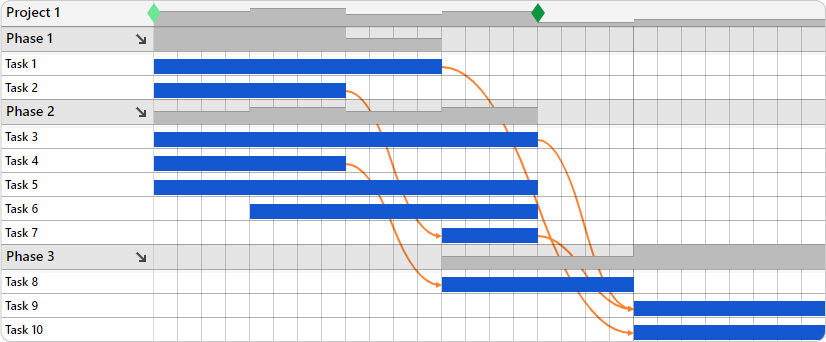Almost every company needs some type of software development today. Good software can make a huge difference in how quickly and efficiently your business functions. Whether it’s for internal processes or external communication, sales, customer service, or payroll. To get into this fast-paced growth-oriented mode, you need to put a software development team or agency in place. This means, you, as a project manager needs to write a request for a software development proposal. How to do that? Let’s find out.
What is RFP in Software Development?
The easiest way to define a request for a software development (RFP) proposal is to say that it is a document containing all the information about your project. You can send this out to various software development professionals, teams, or agencies looking to bring your proposed project to life.
Once some of the software development teams show interest, they can send their proposals with detailed information on how they will handle the project, timelines, deliverables, etc.
What To Include In A Request For A Software Development Proposal?
Writing an RFP isn’t just about writing an email outlining what the project is about. You’ll need to be clear and detailed about the “what”, “how” and “when” of your project (which should hopefully already be clear).
Let’s understand the important points you must cover in your RFP document.
At the start of your proposal, inform the receiver about who they will be communicating with for this particular project. That person (a team leader, manager, you, or any other team member) will be responsible for all communication during the project.
2. Company Description
A short company bio is a great way to let the receiver know you better.
What’s your company all about? Where are you based? What are the highlights of your achievements or milestones? Are you a startup or a well-established name?
Mentioning the main products or services is also a good idea as you want the software developer to understand the industry you’re in.
3. Project Overview
This section is the most important part of your RFP. Here you establish clear objectives detailing what you need the developer to do, what you want to achieve with this project, and the target audience.
In other words, this section highlights your project’s purpose and what you want to achieve.
4. Timelines
Set clear expectations about how much time it will take for you to screen various proposals and get back to the developers. It’s best to present this in a timeline that includes the deadline for receiving the software project proposals, screening them, and finalizing the winning proposal.
5. Scope of Work
Here you dive even deeper into detailing your project. The software developer should understand the number of resources required for the project and the deadline for particular milestones and objectives in the project. Be clear about the weight of the work and the magnitude of the project.
6. Technical Requirements
Outlining the technical requirements is also important to get as close to the project’s cost as possible. Describe the:
- Design
- Features
- Functions
- Platform, framework, language, etc you’d like the project to be created in.
7. Be Open About The Budget
Don’t provide a vague figure. It’s best to give a realistic and affordable range so that the receiver knows right at the beginning of the project if it is doable for them in terms of resources.
Establishing a budget saves a lot of time on the back-and-forth during the negotiation and closure stages. That’s because those who aren’t willing to work within your budget are out in the very first stage – the RFP stage.
8. Evaluation
List down the evaluation criteria for the proposals. For example, pricing, experience, and technical knowledge. It’s important for your prospective vendors to know the basis on which they’ll be judged and selected.
9. Review
What’s your review process? Do you count the ticks in the checkboxes from your evaluation criteria and have a point-based system, or do you go by team discussions to conclude which proposal is the best?
Let the vendors know so that they can understand the fairness of your selection process.
10. Final Discussion
Set a date for a final discussion with the selected software development vendor. Once you select someone for the task, it’s important to get on a call with them or meet them before the project begins to better understand everything at both ends. Good collaborative communication can help sharpen ideas and provide better solutions.
So, how do you as a project manager ensure that you’re ticking all the right boxes and creating the right request? Let’s find out.

Request For Software Development Proposal Sample
Now that you understand what’s to be included in your RRP, here is a sample that can help you create your request for proposal for software development quickly.
[The date]
[Your Project Name]
[Company contact information] (Provide the name, contact number, and email of the person who will be the one point of contact throughout the project)
[Company Description]
The name of your company and a brief description of what you do, your products and services.
[Format + timeline for proposals]
- When is the last date to submit proposals?
- How much time will you take to analyze proposals?
- When do you plan to start the project?
[Project overview]
- Tell important details of the project to set the right expectations.
- Describe the final objective you want to achieve with the project.
[Scope of work + results]
- Outline the deliverables of the project.
- Give a deadline for the project.
[Technical requirements]
- Design
- Features
- Functions
- Technology (framework, language, platform, etc)
[Budget]
[Evaluation criteria]
- Experience of the software developers.
- Technical expertise.
- Quoted cost
The Right Software Project Proposal + the Right Software Development Team

Once you get this format right, you can send it out to all the software teams and agencies you’re interested in working with. And you’re on your way to getting the right software to complete your project. Success feels great, doesn’t it?
But the key to getting there is by using the right project resource management system along the way. This will help you get all your points conveyed as clearly as possible. And when you’re able to present your company and your project requirements properly, you’ll make the whole process of having the project done much easier and faster.
What exactly are the benefits of resource management for a software development proposal? Let’s dive in!
5 Ways a Resource Management System Can Help Write a Better Proposal
With the right resource management platform in place, you’re guaranteed to get your software development proposal delivered right. That’s because it can help you:
- Avoid Gaps and Delays – Knowing exactly how many resources you have available helps you plan how to use them better. You can understand the correct timeline of your project according to the resources available to you. This also helps you set the right expectations while sending a request for a proposal.
- Prevent Team Burnout – Effective resource management helps you understand the capacity of each team member. This leads to avoiding errors of overallocation, thereby preventing burnout. If there’s not much room for the new project, it’s best to give a longer deadline to the software development team.
- Show Proof Of Your Work – If for any reason (primarily, lack of resources), the project is incomplete or is taking longer than expected, you have proof of all the work that was done as was planned.
- Become More Transparent – Other teams and departments can see your team’s availability and bandwidth and vice versa. This makes it easier for teams to collaborate with each other or assign tasks as there is more transparency about who is doing what.
- Measure Efficiency – Once you understand the resources you need to manage a project, you’ll be able to assign each task accordingly. This will enable you to measure ROI at the end of the project.
A Clear Path For Software Development

Ganttic resource management software for IT teams can help you stay on top of your software development every step of the way. Not only when crafting your proposal, but during and after as well. Trusted by IT teams around the world such as Q agency, Dribia, Viewpoint Construction Software, and AB Ovo, check out these great features.
- An agile tool that’s easy to update, which gives a quick overview of the project schedule.
- Keep track of how well the development team is sticking to their timeline with clear milestones.
- Share changes to the project instantly, without needing to pay for additional licenses or adding more team members to the plan. With unlimited free users and shareable URLs everyone can stay up to date.
- Or share curated and specially crafted snapshots of the planner with Ganttic’s exclusive View feature. Here, users only see the part that’s relevant to them.
- Add all kinds of resources to the planner – including your outsourced development team. You can monitor their progress while cross referencing how it will impact your other projects with clear dependencies.
- Wrap up projects by creating comprehensive project and resource reports in seconds. And share them instantly.